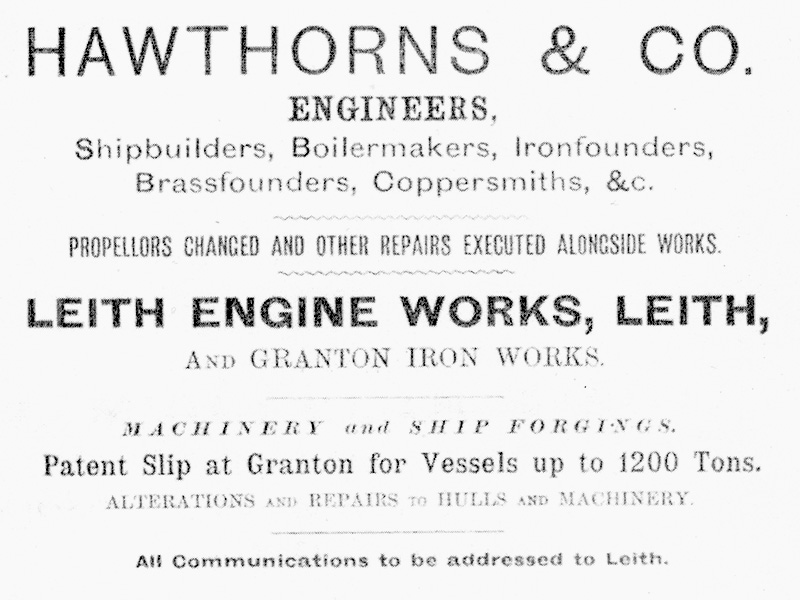Hawthorn’s Engine Works



Hawthorns, based in Newcastle upon Tyne, purchased the Leith Engine Works in 1846, their activities there including the building and repairing of ships and their boilers and machinery. Access to the yard for ships was possible as both the Bernard Street bridge and what we would now call the Sandport Street bridge could open (the Lower Drawbridge and the Upper Drawbridge respectively). In addition, the yard built railway locomotives – some for local use, such as for the North British Railway which opened between Edinburgh and Berwick in 1846, and some for more distant destinations, including the fist engine to operate in South Africa.
They continued in business into the twentieth century and after they closed the site was re-used, the part at the Great Junction Street end becoming the site for the State cinema (now converted for residential use) and other parts of the site being used for various commercial purposes. Subsequently, part of the site was used for residential developemnts including Sheriff Park and Sheriff Brae. The building adjacent to Mill Lane, whch is Gladstoneᰱs Bar at the time of writing, may have been Hawthorn’s drawing office.
The photograph above shows Hawthorn‘s works complete with a ship alongside – presumably for some sort of repairs. This picture gives us some idea of the busy and smoky industrial landscape of Leith. This photograph for this postcard must have been taken before 1905 when overhead tram wires would have been installed over Junction Bridge and probably is no earlier than 1895. Note the booking office and entrance to Junction Road Station in the foreground, the horse tram on Junction Bridge and the entrance to the Coburg Street railway tunnel. Also try counting the number of tall industrial chimneys visible and think about the amount of pollution this must have caused! Figure 17 also predates 1905 but must relate to 1901 or later because the building in the foreground on the right – now the Junction Bridge Bar – dates from 1901. It too shows us horse trams and Junction Road Station. On the other side of the Water of Leith are some high tenement buildings – now demolished – and on the left-hand side of the road are the shops that once stood on the corner of Coburg Street.